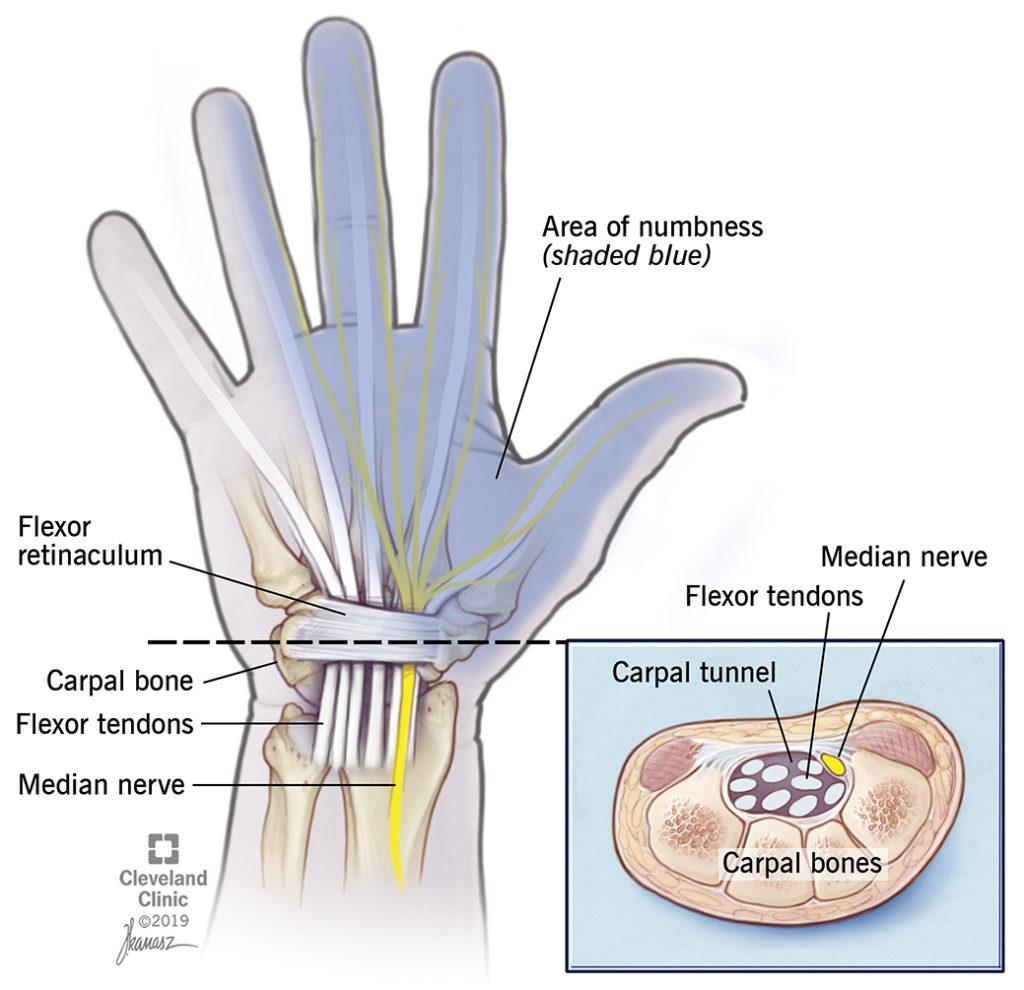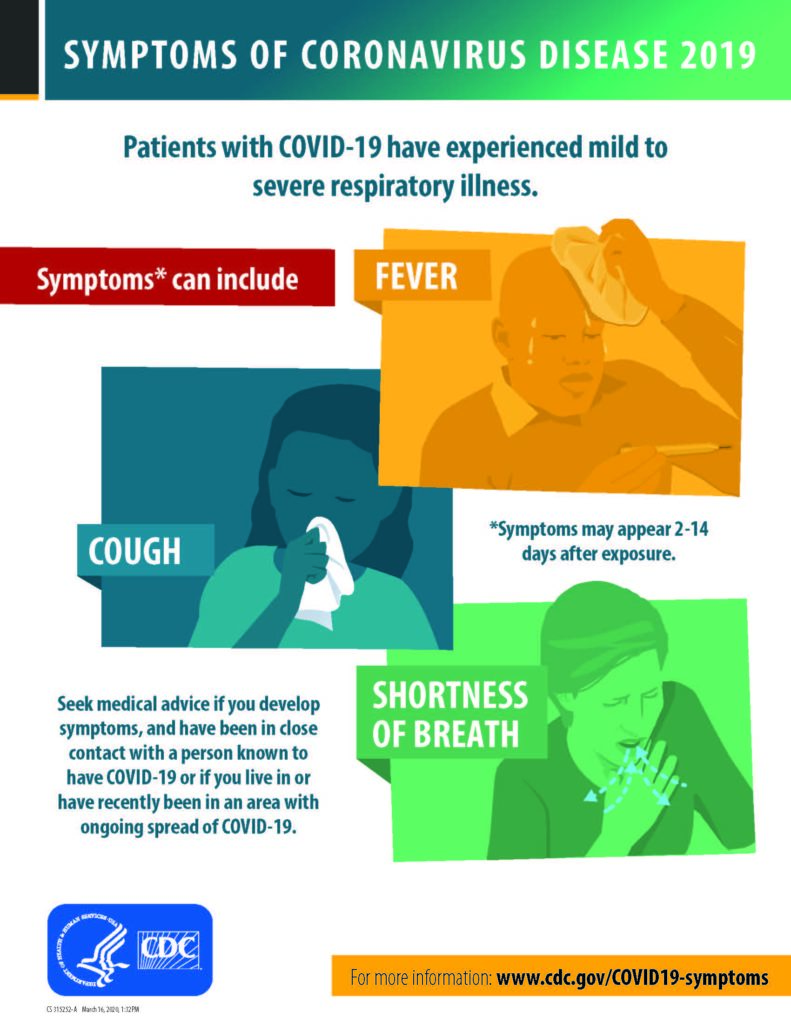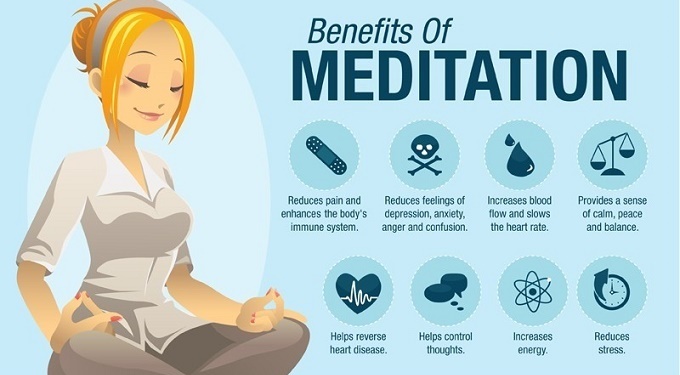 17 Feb 2021
17 Feb 2021
New Legislation makes Chiropractic Care More Affordable
| On January 13, 2021, Congress passed the Competitive Health Insurance Reform Act, something that levels the financial playing field in the insurance industry, including the affordability of chiropractic care. “The American Chiropractic Association advocated for this important change for many years. The passage of this bill is an essential step toward increasing competition in health insurance markets and lowering prices for consumers,” said ACA President Robert C. Jones, DC. Previously, insurance companies were considered exempt from federal antitrust laws. Said laws served the purpose of eliminating monopolies and fostering a competitive market. Insurance companies have been able to establish monopolized territories and cherrypick what healthcare services they decide to cover, including chiropractic. The American Chiropractic Association explains in their article that, “It levels the playing field between a doctor and a health insurance company. Doctors have long been subject to federal antitrust scrutiny… Health insurance companies […] have been free to exchange among themselves suggested price information, terms of service and criteria for the reimbursement of doctors of chiropractic. “They also have been free to obtain and utilize reimbursement criteria from various ‘medical consultants’ who often are direct competitors of doctors of chiropractic and have anticompetitive intent. With certain limited exceptions, this ability of insurance companies now ends with the elimination of the ‘business of insurance’ exemption to the federal antitrust laws.” The Act has finally been signed into law after years and years of being struck down by previous legislations. There are mixed reactions to the new law. The bottom line is that it means change in the insurance industry, and potentially change in the cost of specialized healthcare. Author: ChiroPlanet.com Source: American Chiropractic Association. January 20, 2021. | |
Uncategorized
COMMENTS: No Comments
 19 Dec 2020
19 Dec 2020
Sugarplum fairies?- not good.
Let’s do a hard think about the sugar we eat during the holidays.
A diet overly saturated with sugar is as American as apple pie. From the golden age of the Twinkie to this scary time of the Monster energy drink, our nation has grown accustomed to consuming sugar at an alarming rate. For instance, between 1980 and 2010 the amount of sugar that each American consumes per year increased from 80lbs/py/pp to 150lbs/py/pp (1,2) This number is outrageous, and stats like these always leave me with more questions than answers. These are important questions like, “What is this doing to our bodies?” and, “How is it even possible to consume that much sugar in a year?” Overall, I think the most critical question we must ask is, “How does the amount of sugar we consume each year keep rising so drastically?” What are the driving forces?
The American heart association recommends that men limit their daily sugar intake to less than 150 calories per day (37.5 grams, or 9 teaspoons) and 100 calories per day (25 grams, or 6 teaspoons) for women.
Sugar is Addictive
A common misconception by the general public is that sugar is a harmless substance; this, however, may not be the case. When an individual consumes sugar, the brain releases dopamine, a neurotransmitter related to the reward center of the brain. When a given behavior stimulates the release of dopamine, a feeling of pleasure or enjoyment is correlated to the act, leading to repeated behavior to induce the same “high-like” effect over and over again. This explains why, despite the knowledge that eating excessive sugar is harmful to our health, we still chose to consume it on a daily basis. (3)
Typical Daily Consumption
The American heart association recommends that men limit their daily sugar intake to less than 150 calories per day (37.5 grams, or 9 teaspoons) and 100 calories per day (25 grams, or 6 teaspoons) for women. These figures are good to know, but how does that compare to the products and serving sizes that we consume every day? To add some perspective, a 12oz can of coke contains 140 calories (39 grams, or 7.8 teaspoons) of sugar which surpasses the recommended daily intake with one only serving size. Also, juices from concentrate have similar values as soda—depending on the brand. One way to combat excessive sugar intake is to read your food labels and stay away from syrup sugar molecules ending in “ose” (dextrose, fructose, glucose, lactose, maltose, sucrose). (4)
The Dangers of Insulin Resistance
Consumption of sugar causes the body to produce insulin, a hormone secreted by the pancreas. The production of insulin allows the body to utilize the excess sugar circulating in the blood as an alternative form of energy. This is a normal metabolic function, but like all systems in the body, if it is forced to work without a period of rest, the system can malfunction. The most common malfunction is insulin resistance; this occurs when the cells are continuously exposed to insulin, causing them to become desensitized to its effects. This hinders the body’s ability to eliminate the excess sugar, causing an increase in blood glucose levels that can lead to diabetes and other complications like heart-attack or stroke. (5)
Marketing the Problem
We know sugar is addictive, and we know that consuming too much of it negatively impacts our health, yet the marketing of sugary substances has steadily increased over time. What gives? Let’s consider the negative implication of comparatively addictive substances like tobacco or alcohol. With alcohol, we know for sure that if you drink too much, your liver will shrivel up like a raisin, and you will die. With tobacco, we know for certain the correlation between being a life-long smoker, and sudden cancer of the mouth or lungs. Now, consider the fact that the myriad of negative health ramifications caused from consuming too much sugar can be vast and associative with other conditions, making them hard to tie directly and definitively with sugar consumption. When it comes to the FTC and advertising regulations, that ole’ adage always comes into play: “It’s not about what you know, it’s about what you can prove in court.” So, for now, advertisers can market sugary foods to whoever they want, including children. Gone the way of the buffalo is the Marlborough man, but the Kool-aide man is here to stay, at least for the foreseeable future.
It might feel nice to point the finger at the entire system and cry foul-play. But, in reality, it is every individual’s personal choices that determine if they consume nutritious food or not.
Final Thoughts
It might be easy to place the blame on large corporations that are infusing more and more of our foods with high-fructose corn syrup, or the ad-men that are finding more powerful ways to appeal to our consciousness. It might feel nice to point the finger at the entire system and cry foul-play. But, in reality, it is every individual’s personal choices that determine if they consume nutritious food or not. No, it’s not always easy to know what the healthier options are, and yes, those whole foods are often more expensive. But those costs are minimal when compared to the price that our bodies pay when we consume too much sugar on a daily basis.
https://sugarscience.ucsf.edu/dispelling-myths-too-much.html#.XnplHC3MxR0
http://wholehealthsource.blogspot.com/2012/02/by-2606-us-diet-will-be-100-percent.html
https://www.healthline.com/health/food-nutrition/experts-is-sugar-addictive-drug#1
https://www.healthline.com/health/food-nutrition/experts-is-sugar-addictive-drug#1
Uncategorized
COMMENTS: No Comments
Chiropractic as a stress buster? How so?

Most people associate Chiropractic care with reducing the aches and pains of daily life. This pain may be caused by frequent exercise, sitting at a desk all day, a past car accident or some other previous physical injury. But, what if I told you that the main cause of your daily pain isn’t always physical but often mental?
According the Anxiety and Depression Association of America, major depression at any point in time impacts roughly 5 percent of all people, with a 17% lifetime risk of developing this condition. Additionally, roughly half of all those diagnosed with depression also suffer from anxiety.
While medications are most often prescribed for anxiety and depression, many prefer to take the holistic healing route. When it comes to our patients, many seem to be suffering from mental health issues and the results speak for themselves.
How can chiropractic care – typically associated with physical pain – help Emotional Healing?
Here are some interesting facts regarding how chiropractic care helps with mental health:
The Journal of Upper Cervical Chiropractic Research conducted a study published in June, 2013 designed for testing the correlation between chiropractic care and its impact on mental health. Prior research showed of the 2,818 patients undergoing chiropractic care, 76% reported an improvement in their mental/emotional health. Additionally, these 76% also reported positive changes in stress and increased life enjoyment in the months after receiving chiropractic care. Similar findings have also been reported in the American Journal of Psychiatry.
So, how does a properly aligned spine impact mental health?
How can Chiropractic Care Improve Mental Health?
Decreases mind-fogging pain
One reason that chiropractic care helps mental health is by decreasing physical pain that may be fogging the mind. As anyone with chronic pain can attest, this discomfort can have a serious impact on mood and mental health. As the spine becomes aligned and pain decreases, anxiety and depression sprouting from pain lessen throughout treatment. This was further illustrated in a study of participants complaining of anxiety or depression who underwent 12 sessions of chiropractic care. As a result, muscle tension decreased, and mental clarity increased as well.
Decreases chronic pain, a common cause of depression
When chronic pain is a part of a persons daily life, not only is it hard to focus but often not well enough to be social, to take part in once-loved activities. Studies have proven that depression occurs at a rate of three to four times higher in those with chronic pain when compared to their healthier peers. The cycle of chronic pain and depression continues unless it is broken. Regular chiropractic adjustments have proven to decrease pain, depression and anxiety and allow for a healthier existence, both emotionally and physically
How can reducing spinal subluxations (misalignment) improve nerve flow and brain function?
Our moods are managed by our body’s chemistry, regulated by the nervous system. Misalignment of the spine (specifically the first, second or third vertebrae) can cause pressure around the brain stem which can cause interference neurologically and chemically. Often people turn to medications – used to alter their brain chemistry. People looking for a non-medication solution often find that a specific re-alignment of these (and other) vertebrae can do wonders for their brain health and emotional state.
Look, it’s no secret that being out of adjustment can make some of us cranky, but prolonging the issue without taking care of the symptom can cause long-term issues, physical and emotional, that may end up more difficult to correct over time.
Headaches? Neck-stiffnes and pain? Tingling in your limbs and feet? Make an appointment to come see us, and make the call today. Your mental health may depend on it
Uncategorized
COMMENTS: No Comments
Meditation and Exercise May Reduce Cold Symptoms
| A small study conducted by the University of Wisconsin-Madison indicates that meditation and exercise significantly reduced the number of days people missed work due to colds or flu. The results need to be confirmed but could add another tool to the prevention options available for respiratory illnesses. Currently, there is no vaccine for the common cold, and flu vaccines are only effective 60-70% of the time. The only other preventative measures available for the illnesses are hand washing and avoiding contact with infected persons. While the common cold and most strains of the flu are considered mild by doctors, the estimated costs of them to a society run into billions of dollars annually. Working from a thesis that exercise and meditation could prevent illness, Dr. Bruce Barrett and his colleagues randomly assigned 149 patients into three groups; one group participated in an eight-week exercise training, one group participated in an eight-week meditation training and the third participated as a control and received no special instructions. After the training periods were completed, the researchers tracked illness incidents in the groups through the cold and flu season. Of the 50 people in the control group, 40 got sick as opposed to 27 in the meditation group and 26 in the exercise group. Furthermore, the exercise and meditation groups reported feeling sick for an average of only five days, while the control group felt ill for nine. Exercise and meditation groups also missed less work. The researchers speculate that exercise helped strengthen the immune systems of test subjects, while meditation left subjects better prepared to cope with the effects of illness. Dr. Barrett stated, however, that the findings were preliminary and needed more study. Author: ChiroPlanet.com Source: Ann Fam Med. July/August 2012. Vol. 10, No. 4. |
Uncategorized
COMMENTS: No Comments
Chiropractic and Carpal Tunnel Syndrome


Chiropractic and Carpal Tunnel Syndrome
| Dealing with the new normal- you’re wrists. | |
| With so many people working from home today, and many in less-than-perfect working stations (kitchen counters, dining room tables, etc) We thought it was important to talk about common areas of stress to the body in these make-do conditions. What is Carpal tunnel syndrome? The fingers are packed with nerve endings that help people touch and feel the environment around them. Many of these nerve endings come from the median nerve which begins in the shoulder region and ends just past the wrist into the hand. At the point of the wrist is the carpal tunnel. The median nerve along with tendons pass through the carpal tunnel from the forearm into the hand. In carpal tunnel syndrome, the median nerve can become compacted by the surrounding tendons. This places pressure on the nerve and can cause damage. This leads to a variety of symptoms, ranging from mild to severe. The condition may need to be treated with surgery. What follows are ten symptoms of carpal tunnel syndrome: Advertisement Symptom #1: Numbness and Tingling Numbness and tingling are common symptoms of carpal tunnel syndrome. These sensations are not uncommon. Most people have experienced them after sitting awkwardly for a while, but it usually goes away. Although often harmless, numbness and tingling can be an indicator that something is wrong. For people with carpal tunnel syndrome, numbness and tingling in the hand can range from uncomfortable to painful. It is often a mild symptom at first, but it increases in severity as the condition progresses. One distinguishing characteristic of carpal tunnel syndrome is that the small finger will not be affected since it has a different nerve than the others. The Stats Carpal tunnel syndrome (CTS) affects more than 3 million people annually and occurs when there is compression of the median nerve where the nerve runs through the carpal bones of the wrist. A review of CTS studies that include joint mobilization indicates, according to researchers, “…joint mobilization was associated with positive clinical effects for persons with CTS.” Joint mobilization of the wrist is nothing more than introducing safe, controlled force to the carpal bones of the wrist in order to reduce pressure to the median nerve, break adhesions, and improve blood flow. Doctors of chiropractic are trained and fully skilled in the art of joint mobilization, which is commonly called “adjustments.” Though diagnosing carpal tunnel syndrome can be difficult because it is often impossible to pinpoint its exact cause, Chiropractors can accurately diagnose carpal tunnel syndrome. Dr.s of Chiropractic have special expertise in nerve entrapment syndromes, like carpal tunnel syndrome, and have effective methods for treating the issue. Specific exercises can help reduce pain, numbness, and other symptoms associated with carpal tunnel syndrome by reducing pressure on the median nerve at the wrist. These exercises help the median nerve glide through the carpal tunnel, which helps improve range of motion and hand function. Exercises include: Wrist extension stretch – performed by straightening the arm with the wrist bent backwards as if signaling someone to stop, and then pulling the palm back with the other hand and holding for 15 seconds Wrist flexion stretch – straighten the arm with the palm facing down and wrist bent so that fingers are towards the floor; pull the hand gently towards the body and hold for 15 seconds Medial nerve glides – performed by making a fist with the thumb outside the fingers and facing towards you, extending the fingers and thumb so the hand is straight, bending the wrist so that your palm faces upwards, extending the thumb, and straightening the arm If you are suffering from CTS, or similar soft-tissue ailment, we encourage you to consider chiropractic care today. | |
Uncategorized
COMMENTS: No Comments
More from the CDC.
Please be aware of the sources you get your information from. A lot of people with the best intentions are posting inaccurate information about prevention and care and taking the wrong advice can be harmful.
Consider your source.

Uncategorized
COMMENTS: No Comments
This just in from the CDC.
Are you experiencing any of these symptoms?

Uncategorized
COMMENTS: No Comments
 09 Mar 2020
09 Mar 2020
Chiropractic helps you boost your immune system
Research shows chiropractic adjustments help fight off disease.
What we know is that immediately after a chiropractic adjustment there is a HUGE increase in immune-boosting chemical messengers.
These chemical messengers are known as “cytokines” are little immune -system postmen who deliver the messages to your body to ramp up your immune system’s response to germs, bacteria, viruses. and other foreign invaders.
“Doc, I’m sick, I can’t come in.”
We appreciate the concern and want you to know that chiropractic adjustments are a safe and effective way to help your body adapt to the stresses of daily life, and boost your immune system. Unless people truly can’t get out of bed we always encourage our patients to get checked, and adjusted if necessary.
In fact, it is largely understood that chiropractic became a licensed profession due to the increased immune response seen in people in chiropractic care during the 1918 Flu Pandemic, which killed between 20-50 million people world wide.
Here is why we know chiropractic is a safe, natural and effective strategy to boosting your immune function…

Every day we are surrounded by billions of bacteria, viruses and “germs”, so why aren’t we always sick?
We get sick when our body is exposed to higher levels of stress, this stress (either lack of sleep, decreased movement, emotional stress, increased sugar, decreased sunlight, etc.) slows down our immune function and ramps up our sympathetic nervous system; making us less able to adapt to the already abundant levels of bacteria, viruses, germs.
The same sympathetic nervous system STRESS response occurs when we have misalignments and fixation in our spine, this lack of mobility in the spine is known to create a disturbance in your nervous system, this constant irritation to the nervous system slows down our immune response.
This is where chiropractic adjustments come in, by restoring proper motion, creating ease within the body, and balancing the sympathetic and parasympathetic nervous system, our body is better able to adapt to our environment, making us less prone to getting sick.
We hope this has been an insightful explanation of how chiropractic is a known safe, and effective way to improve your immune function whenever you are feeling an increased amount of stress.

Uncategorized
COMMENTS: No Comments
 25 Feb 2020
25 Feb 2020
The History of Chiropractic Care
The word ‘chiropractic’ comes from the Greek words chiro (meaning ‘hand’) and praktos (meaning ‘done’), i.e. Done by Hand. The name was chosen by the developer of chiropractic, Daniel David Palmer.
A prolific reader of all things scientific, DD Palmer realized that although various forms of manipulation had been used for hundreds if not thousands of years, no one had developed a philosophical or scientific rationale to explain their effects. Palmer’s major contribution to the health field was therefore the codification of the philosophy, art and science of chiropractic which was based on his extensive study of anatomy and physiology.
Palmer performed the initial chiropractic adjustment in September 1895. Palmer examined a janitor who had become deaf 17 years prior after he felt something “give” in his back. Palmer examined the area and gave a crude “adjustment” to what was felt to be a misplaced vertebra in the upper back. The janitor then observed that his hearing improved.
From that first adjustment, DD Palmer continued to develop chiropractic and in 1897 established the Palmer School of Cure, now known as the Palmer College of Chiropractic, in Davenport, Iowa, where it remains today. Following the first adjustment, many people became interested in Palmer’s new science and healing art. Among his early students were Palmer’s son, Bartlett Joshua (BJ), as well as members of the older healing arts of medicine and osteopathy. The first state law licensing chiropractors was passed in 1913, and by 1931, 39 states had given chiropractors legal recognition.
Today, there are more than 70,000 active chiropractic licenses in the United States. All 50 states, the District of Columbia, Puerto Rico, and the U.S. Virgin Islands officially recognize chiropractic as a health care profession. Many other countries also recognize and regulate chiropractic, including Canada, Mexico, Great Britain, Australia, Japan and Switzerland.
Uncategorized
COMMENTS: No Comments
 28 Apr 2017
28 Apr 2017
How to use food to help your body fight inflammation
You are what you eat, right? But what does that mean? Learn how your food affects inflammation in your body, and what that means for your health.
The term “anti-inflammatory diet” gets thrown around in nutrition conversations a lot these days. But why is inflammation bad for us, anyway? And what does food have to do with it?
Inflammation is a part of your body’s normal response to infection or injury. It’s when your damaged tissue releases chemicals that tell white blood cells to start repairing. But sometimes, inflammation is low-grade, spread throughout the body, and chronic.
This chronic inflammation can do damage to your body. It can play a role in the buildup of plaque in your arteries that can up your risk of heart disease and stroke. It’s also associated with a higher risk of cancer, diabetes and other chronic conditions.
How your food can help or hurt
The choices you make at the grocery store can have an impact on the inflammation in your body. Scientists are still unraveling how food affects the body’s inflammatory processes, but they know a few things.
Research shows that what you eat can affect the levels of C-reactive protein (CRP)—a marker for inflammation—in your blood. That could be because some foods like processed sugars help release inflammatory messengers that can raise the risk of chronic inflammation. Other foods like fruits and veggies help your body fight against oxidative stress, which can trigger inflammation.
The good news: Foods that are anti-inflammatory tend to be the same foods that can help keep you healthy in other ways, too. So eating with inflammation in mind doesn’t have to be complicated or restrictive.
Simple rules of thumb for anti-inflammatory eating:
- Eat more plants. Whole plant foods have the anti-inflammatory nutrients that your body needs. So eating a rainbow of fruits, veggies, whole grains and legumes is the best place to start.
- Focus on antioxidants. They help prevent, delay or repair some types of cell and tissue damage. They’re found in colorful fruits and veggies like berries, leafy greens, beets and avocados, as well as beans and lentils, whole grains, ginger, turmeric and green tea.
- Get your Omega-3s. Omega-3 fatty acids play a role in regulating your body’s inflammatory process and could help regulate pain related to inflammation. Find these healthy fats in fish like salmon, tuna and mackerel, as well as smaller amounts in walnuts, pecans, ground flaxseed and soy.
- Eat less red meat. Red meat can be pro-inflammatory. Are you a burger lover? Aim for a realistic goal. Try substituting your lunchtime beef with fish, nuts or soy-based protein a few times a week.
- Cut the processed stuff. Sugary cereals and drinks, deep-fried food, and pastries are all pro-inflammatory offenders. They can contain plenty of unhealthy fats that are linked to inflammation. But eating whole fruits, veggies, grains and beans can be quick if you prep ahead for multiple meals.
Uncategorized
COMMENTS: No Comments
